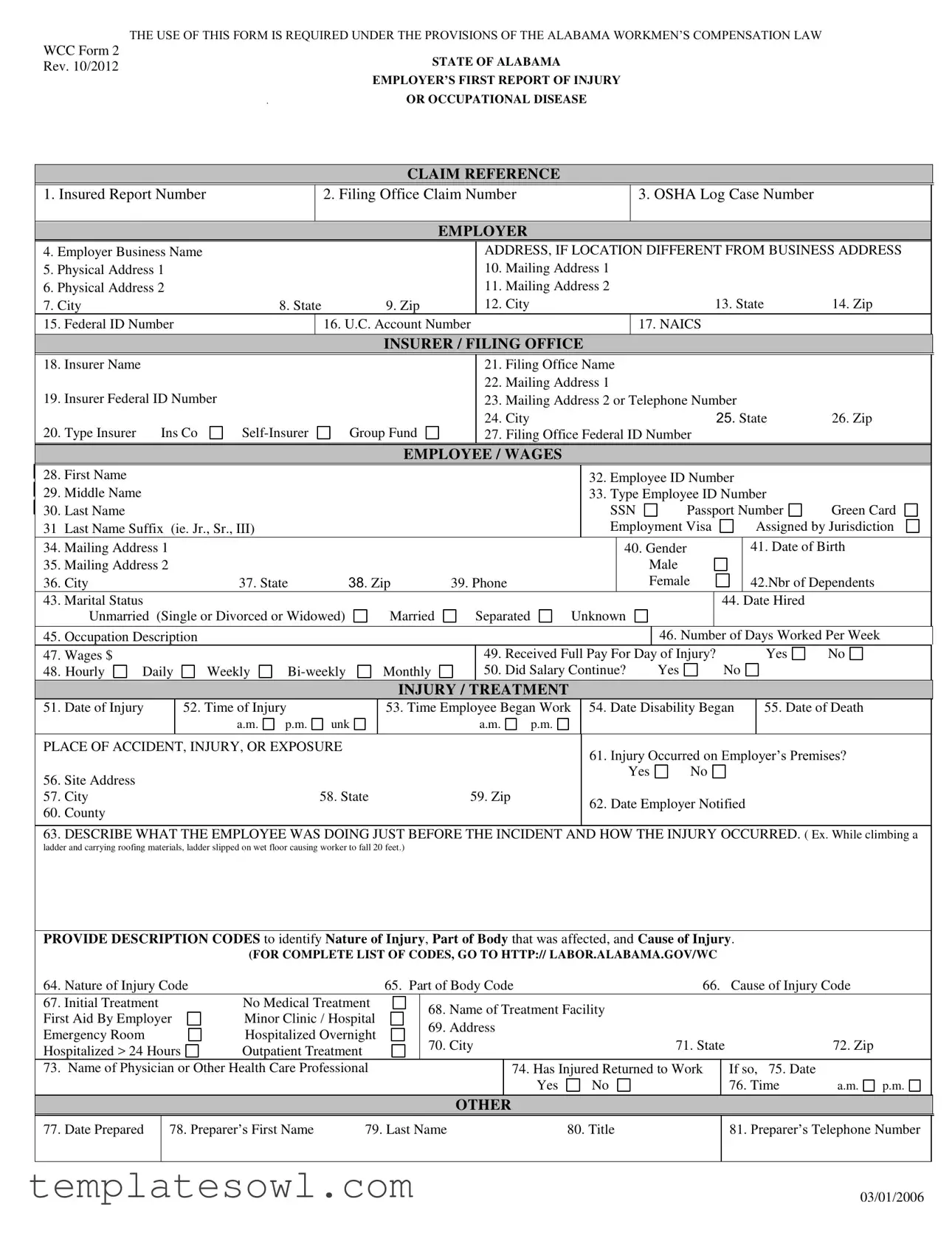What is the Alabama First Report form?
The Alabama First Report form, also known as WCC Form 2, is a required document under Alabama Workmen’s Compensation Law. Employers must complete this form when an employee is injured on the job or contracts an occupational disease. It serves as the initial notification to the workers' compensation insurer and sets the process for claims and benefits in motion.
Who needs to fill out the Alabama First Report form?
The form must be completed by the employer. This includes any business, organization, or entity that has hired the employee who was injured. The employer is responsible for providing accurate and complete information regarding the incident and the affected employee.
When should the form be submitted?
Employers are required to submit the Alabama First Report form as soon as possible, typically within 5 days of the injury or disease diagnosis. Prompt submission helps to ensure that the employee receives timely medical care and benefits.
What information is required on the form?
The form requires several pieces of information, including employer details, employee information, specifics about the injury or disease, and treatment information. Key fields include the employee's name, occupation, date of injury, and a description of how the injury occurred. Also, insurers and filing office details must be included.
Can the form be submitted electronically?
What if the employer fails to file the report on time?
If the employer fails to submit the report within the required timeframe, they may face penalties. Late submission can delay the employee’s access to benefits and could affect the employer's compliance with workers’ compensation regulations.
Is there a code system used in the form?
Yes, the Alabama First Report form requires the use of description codes. These codes help identify the nature of the injury, the part of the body affected, and the cause of the injury. A complete list of codes is available on the Alabama Department of Labor website.
What should be done if there is a change in the employee's condition?
If there is a change in the employee's condition after the report has been submitted, the employer should update the workers' compensation insurer on the new developments. This may involve filing additional reports or providing updated medical information regarding the employee's health status and return-to-work timeline.

